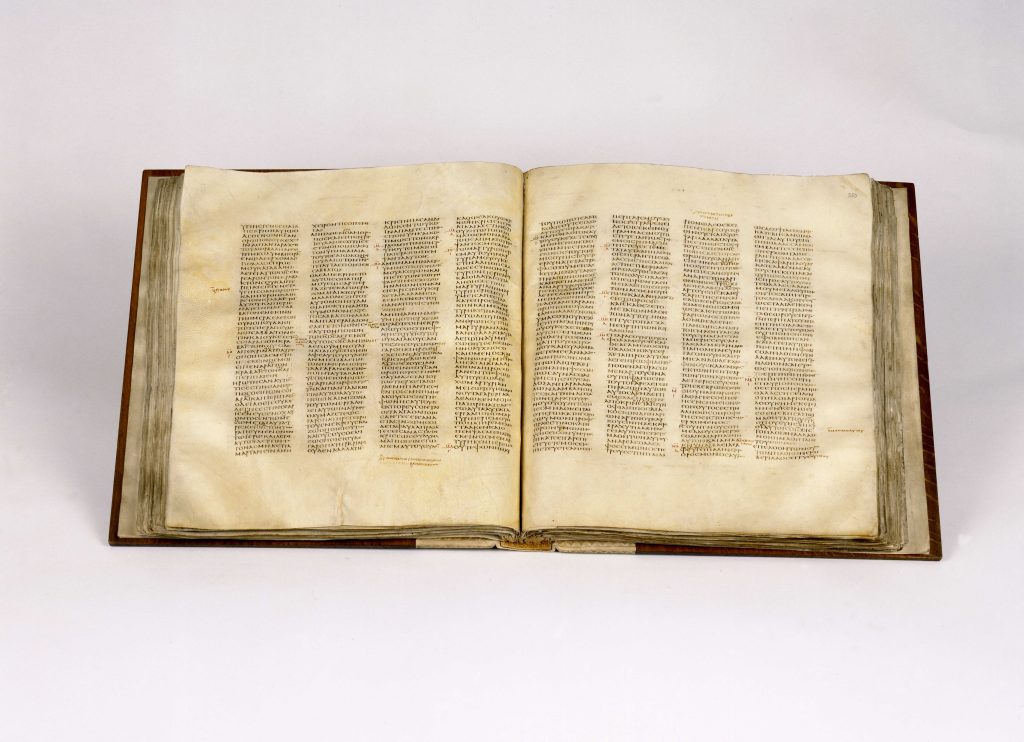- Aug 21, 2003
- 9,865
- 1,714
- 59
- Country
- United States
- Faith
- Christian
- Marital Status
- Married
Good day,
Often times we hear parroted from members of the Roman Catholic Church this claim in many different forms.
But is it true?
Snip.... The claim takes various forms. It is common to hear things like: the list was compiled in Rome in 382, then ratified by the councils of Carthage and Hippo in 397 and 393 and apologists often implicitly treat these councils as ecumenical. Others say the councils of Florence (1449) and Trent (1569) simply “reaffirm” a decision made at these earlier councils. None of these embellishments are true. Nor is it likely true that the Council of Rome in 382 even published such a list, as we’ll see.

 threepillarsblog.org
threepillarsblog.org
You will also Notice that Cajetan does not mention Rome in His list:
It seems that the distinction of "canon(s) that Cajetan said can be used to make the historical discernment is lost by the current day Roman Church and her members post Trent.
I also notice that in understanding their (Rome) own Canon that their members should use at Trent in a work about the Jewish people and their Canon .
Snip...Based on a time-honoured tradition, the Councils of Florence in 1442 and Trent in 1564 resolved for Catholics any doubts and uncertainties. Their list comprises 73 books, which were accepted as sacred and canonical because they were inspired by the Holy Spirit, 46 for the Old Testament, 27 for the New.36 In this way the Catholic Church received its definitive canon. To determine this canon, it based itself on the Church's constant usage. In adopting this canon, which is larger than the Hebrew, it has preserved an authentic memory of Christian origins, since, as we have seen, the more restricted Hebrew canon is later than the formation of the New Testament.
The Jewish People and their Sacred Scriptures in the Christian Bible
The fourth session of Trent:
In Him,
Bill
Often times we hear parroted from members of the Roman Catholic Church this claim in many different forms.
But is it true?
Snip.... The claim takes various forms. It is common to hear things like: the list was compiled in Rome in 382, then ratified by the councils of Carthage and Hippo in 397 and 393 and apologists often implicitly treat these councils as ecumenical. Others say the councils of Florence (1449) and Trent (1569) simply “reaffirm” a decision made at these earlier councils. None of these embellishments are true. Nor is it likely true that the Council of Rome in 382 even published such a list, as we’ll see.

Pope Damasus, the Council of Rome and the Canon of Scripture
It is often claimed that Pope Damasus defined and declared the canon of Scripture at the Council of Rome in 382. Is this true?
You will also Notice that Cajetan does not mention Rome in His list:
“And in this place [after Esther] we conclude the commentaries on the historical books of the Old Testament. For the rest (i.e., Judith, Tobit, and the books of the Maccabees) are reckoned by divine Jerome as outside the canonical books and he places them among the apocrypha, with the book of Wisdom [of Solomon] and Ecclesiasticus (Sirach), as is clear in the Prologus Galeatus. Nor ought you be disturbed if you find somewhere those books reckoned among the canonical, whether in the sacred councils or among the sacred teachers. For the words of both councils and teachers ought to be brought back to the revision of Jerome, and according to his opinion expressed to bishops Chromatius and Heliodorus, those books [today’s aprocrypha/deuterocanonical books] (and if there are any other similar in the canon of the Bible), are not canonical, i.e., [they] are not normative to confirm those things which are of the faith. But they can be called canonical (that is, normative) for the edification of the faithful, as received and authorized in the canon of the Bible. For with this distinction you can discern the things said by Augustine in book 2 of De doctrina christiana, and written in the Council of Florence under Eugene IV, and written in the provincial councils of Carthage and Laodicea, and by Popes Innocent and Gelasius.”
It seems that the distinction of "canon(s) that Cajetan said can be used to make the historical discernment is lost by the current day Roman Church and her members post Trent.
I also notice that in understanding their (Rome) own Canon that their members should use at Trent in a work about the Jewish people and their Canon .
Snip...Based on a time-honoured tradition, the Councils of Florence in 1442 and Trent in 1564 resolved for Catholics any doubts and uncertainties. Their list comprises 73 books, which were accepted as sacred and canonical because they were inspired by the Holy Spirit, 46 for the Old Testament, 27 for the New.36 In this way the Catholic Church received its definitive canon. To determine this canon, it based itself on the Church's constant usage. In adopting this canon, which is larger than the Hebrew, it has preserved an authentic memory of Christian origins, since, as we have seen, the more restricted Hebrew canon is later than the formation of the New Testament.
The Jewish People and their Sacred Scriptures in the Christian Bible
The fourth session of Trent:
In Him,
Bill
Last edited:

